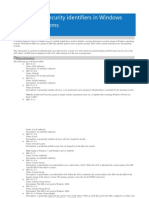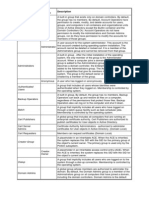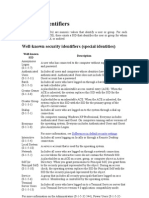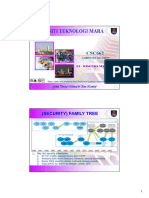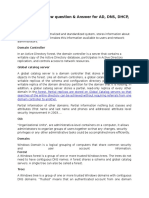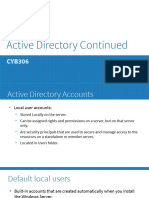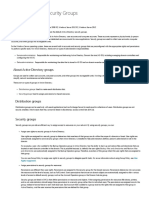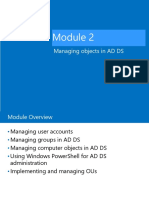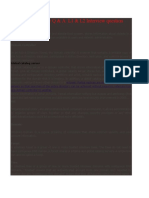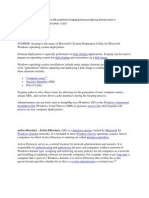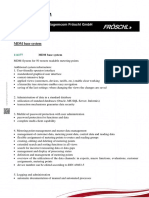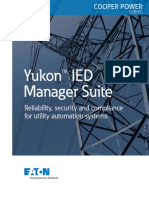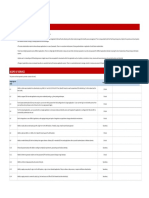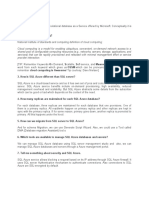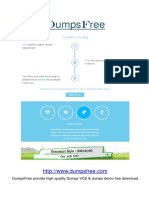0% found this document useful (0 votes)
130 views6 pagesWindows SID and Forensics Guide
This document provides information about security identifiers (SIDs) in Windows. It defines what a SID is and explains that it uniquely identifies a security principal like a user or group. The document then lists many common well-known SIDs used in Windows, including SIDs for users, groups, services, and more. It provides the name and description for each well-known SID.
Uploaded by
Eleva Tu IntelectoCopyright
© © All Rights Reserved
We take content rights seriously. If you suspect this is your content, claim it here.
Available Formats
Download as DOCX, PDF, TXT or read online on Scribd
0% found this document useful (0 votes)
130 views6 pagesWindows SID and Forensics Guide
This document provides information about security identifiers (SIDs) in Windows. It defines what a SID is and explains that it uniquely identifies a security principal like a user or group. The document then lists many common well-known SIDs used in Windows, including SIDs for users, groups, services, and more. It provides the name and description for each well-known SID.
Uploaded by
Eleva Tu IntelectoCopyright
© © All Rights Reserved
We take content rights seriously. If you suspect this is your content, claim it here.
Available Formats
Download as DOCX, PDF, TXT or read online on Scribd
/ 6

